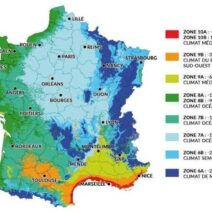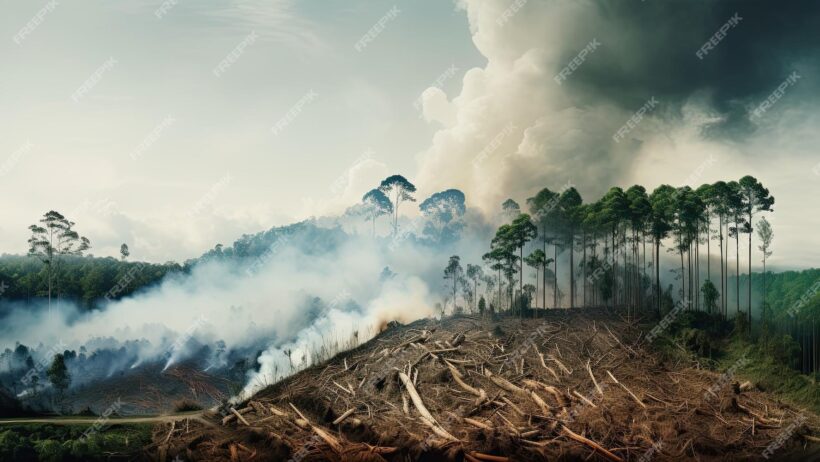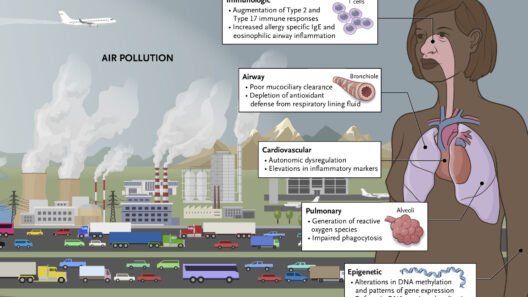Burning forests is a phenomenon that raises significant concerns in contemporary discourse surrounding climate change. The act of deforestation, particularly through the method of slash-and-burn, has garnered attention for its immediate and long-term implications on the global ecosystem. It is important to comprehend how this practice exacerbates global warming and the broader repercussions it holds for humanity and biodiversity alike.
The process of burning forests primarily releases carbon dioxide (CO2) into the atmosphere, a major greenhouse gas contributing to the greenhouse effect. Forests, often dubbed the lungs of the Earth, act as crucial carbon sinks, absorbing CO2 during photosynthesis and storing carbon in their biomass and soil. However, when trees are burned or cut down, this stored carbon is released back into the atmosphere, increasing the concentration of greenhouse gases and consequently elevating global temperatures. A cycle of carbon emissions ignites: the more forests are burned, the greater the warming effect, resulting in climate anomalies, unpredictable weather patterns, and exacerbated natural disasters.
Moreover, the act of deforestation is not merely a matter of carbon release; it reverberates through various ecological processes. The loss of trees disrupts habitats and threatens numerous flora and fauna species with extinction. Estimates suggest that deforestation is responsible for the loss of approximately 10% of global biodiversity. The annihilation of habitats leads to ecological imbalance, where species that depend on forests for sustenance and shelter find themselves without resources essential for their survival. This consequential loss of biodiversity can induce cascading effects across ecosystems, destabilizing food chains and undermining ecosystem resilience.
In addition to biodiversity loss, deforestation significantly affects the water cycle. Trees play an indispensable role in maintaining hydrological balance by absorbing rainfall and facilitating groundwater recharge. When forests are razed, the landscape becomes susceptible to soil erosion, which compounds water runoff and decreases the replenishment of aquifers. Furthermore, diminished forest cover disrupts local climate conditions, leading to altered precipitation patterns that can cause both droughts and floods, further threatening agricultural practices. The agricultural industry, often a contributor to deforestation through expansion for crop production or livestock grazing, finds itself caught in a vicious cycle where climate change adversely impacts crop yields.
Cultural and socio-economic dimensions of deforestation also warrant examination. Many indigenous communities depend on forests for their livelihoods, cultural practices, and identity. The extraction of timber and land for industrial purposes often runs contrary to the needs and rights of local populations. The disruption of these communities not only exacerbates socio-economic inequalities but also contributes to a further disconnection between humanity and the natural world. As ecosystems deteriorate and resources dwindle, competition for land and food can incite conflict and exacerbate social unrest.
Despite the alarming consequences of deforestation and burning forests, the reasons behind this persistence risk overshadowing the urgency of potential solutions. Economic incentives often drive deforestation, as land clearing presents immediate financial benefits through timber sales or agricultural expansion. In many developing nations, the allure of economic growth leads to policies that prioritize short-term gains over sustainable practices. This complex interplay between development and environmental conservation calls for innovative strategies that can integrate economic viability with ecological stewardship.
A collective global effort is necessary to combat the repercussions of deforestation. Legislative frameworks at international, national, and local levels need to enforce more stringent regulations on land use, emphasizing reforestation and sustainable land management. Various countries have enacted policies aimed at reducing emissions from deforestation and forest degradation (REDD+), which provide financial incentives for preserving forested areas. Additionally, the promotion of sustainable agricultural practices, agroforestry, and responsible consumption can lessen the pressure exerted on forests.
Public awareness campaigns play an instrumental role in altering perceptions towards deforestation. Educating consumers about the environmental impact of their choices, particularly regarding products linked to deforestation, can foster more ethical consumption behaviors. Moreover, initiatives such as tree-planting drives embody a practical approach to mitigating deforestation’s impact. These campaigns not only contribute to carbon sequestration but also restore habitats and promote biodiversity.
The path towards mitigating the impacts of burning forests on global warming is multifaceted and requires collaborative action. It begs the involvement of governments, businesses, NGOs, and individuals alike. Understanding that the fate of the planet is intricately linked to forest preservation is vital. Investing in the sustenance of forests translates into a long-term strategy for safeguarding climate stability, biodiversity, and the well-being of current and future generations.
In conclusion, the burning of forests is a pressing issue that has far-reaching implications extending beyond the immediate environment. While the practice facilitates economic advantages for some, its long-term consequences are detrimental to the planet. Addressing deforestation and its cascading effects on global warming necessitates a commitment to sustainable practices, policy reforms, and public education. It is paramount to recognize that the health of our planet hinges on the stewardship of our forests, underscoring the urgent need for collective action against the plight of deforestation.







